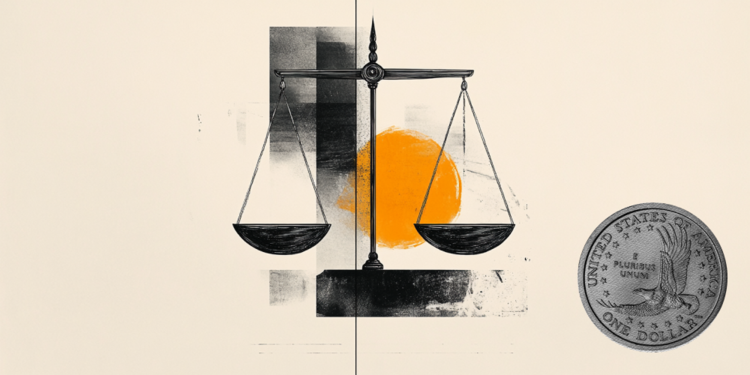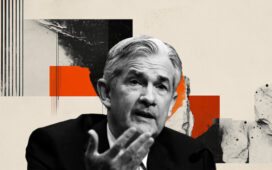- The US Dollar Index moves little as traders adopt caution ahead of the Fed’s interest rate decision.
- Traders expect the Fed to leave interest rates unchanged at its June meeting scheduled on Wednesday.
- US Retail Sales declined by 0.9% in May, exceeding expectations of a 0.7% decrease.
The US Dollar Index (DXY), which measures the value of the US Dollar (USD) against six major currencies, is retracing its recent gains and trading around 98.70 during the Asian hours on Wednesday. Markets expect the US Federal Reserve (Fed) to keep the interest rate unchanged at the June meeting scheduled on Wednesday. Traders now see a nearly 80% probability of a Fed rate cut in September, followed by another one in October, per Reuters.
Traders will likely closely monitor the Federal Open Market Committee’s (FOMC) statement regarding monetary policy, seeking forward guidance amid persistent tariff uncertainty and rising geopolitical tensions.
The Greenback faces challenges due to the weaker-than-expected US economic data released on Tuesday. US Retail Sales fell by 0.9% in May, worse than the expected 0.7% decline and April’s 0.1% decrease (revised from +0.1%). Meanwhile, Industrial Production also declined by 0.2%, against the 0.1% increase, swinging from the previous 0.1% growth.
The US Dollar may regain its ground due to increased safe-haven demand amid rising geopolitical tensions in the Middle East. Israel and Iran continue their cycle of retaliation. However, Tehran has reportedly urged several countries, including Oman, Qatar, and Saudi Arabia, to urge US President Donald Trump to declare an immediate ceasefire.
On Tuesday, US President Donald Trump posted on his social media platform, calling for Iran’s “unconditional surrender.” Investors are concerned that the United States will participate in the Israel-Iran conflict.
US Dollar FAQs
The US Dollar (USD) is the official currency of the United States of America, and the ‘de facto’ currency of a significant number of other countries where it is found in circulation alongside local notes. It is the most heavily traded currency in the world, accounting for over 88% of all global foreign exchange turnover, or an average of $6.6 trillion in transactions per day, according to data from 2022.
Following the second world war, the USD took over from the British Pound as the world’s reserve currency. For most of its history, the US Dollar was backed by Gold, until the Bretton Woods Agreement in 1971 when the Gold Standard went away.
The most important single factor impacting on the value of the US Dollar is monetary policy, which is shaped by the Federal Reserve (Fed). The Fed has two mandates: to achieve price stability (control inflation) and foster full employment. Its primary tool to achieve these two goals is by adjusting interest rates.
When prices are rising too quickly and inflation is above the Fed’s 2% target, the Fed will raise rates, which helps the USD value. When inflation falls below 2% or the Unemployment Rate is too high, the Fed may lower interest rates, which weighs on the Greenback.
In extreme situations, the Federal Reserve can also print more Dollars and enact quantitative easing (QE). QE is the process by which the Fed substantially increases the flow of credit in a stuck financial system.
It is a non-standard policy measure used when credit has dried up because banks will not lend to each other (out of the fear of counterparty default). It is a last resort when simply lowering interest rates is unlikely to achieve the necessary result. It was the Fed’s weapon of choice to combat the credit crunch that occurred during the Great Financial Crisis in 2008. It involves the Fed printing more Dollars and using them to buy US government bonds predominantly from financial institutions. QE usually leads to a weaker US Dollar.
Quantitative tightening (QT) is the reverse process whereby the Federal Reserve stops buying bonds from financial institutions and does not reinvest the principal from the bonds it holds maturing in new purchases. It is usually positive for the US Dollar.



